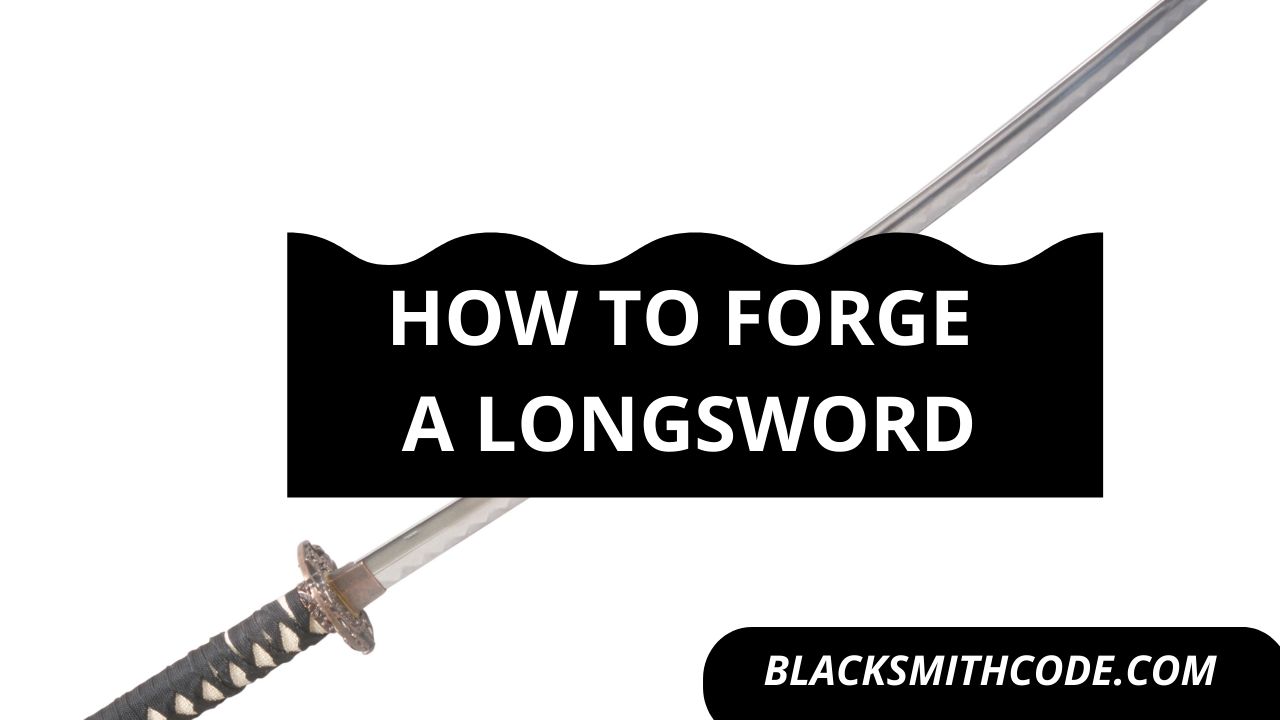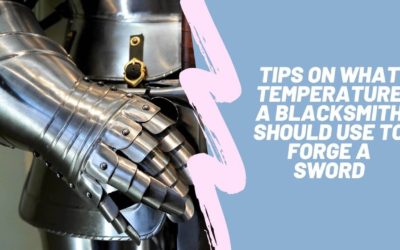Do you have the misconceptions that forging Longsword is complicated? Well, the process of forging a longsword appears complicated until you attempt it.
A longsword is a European type of sword with a sheath and a handle that allows the grip of two hands. As the name implies, the longsword can be as long as 1.1 meters.
The longsword is a double-edged sword; this means it has its edges sharpened for cutting. The longsword allows the use of two hands. It is a popular weapon among Europeans.
Forging a sword requires expertise, likewise a longsword. To make a longsword, you need to carry out some essential processes. These processes include specific but straightforward steps that direct you in forging your longsword.
To forge your longsword, you need to follow these steps;
Instructions on How to Forge a Longsword
Step 1: Organise Your Tools and Materials
Organisation is one quality all blacksmiths should have. Organizing your equipment and tools is very vital. As much as holding your tools is essential, preparing your material is also very crucial.
To forge your longsword, you should make use of steel as your material. It is effortless and reliable to build your longsword from steel.
Step 2: Provide Yourself With A Perfect Design
You have to know what you want to forge. You can forge equipment from abstract ideas, but you should get a design before starting especially if you’re a beginner.
Even people with abstract ideas have design in their heads. They create the design and forge, so whatever you want to make, you should get a design. You can sketch the model in a paper or check out an example of what you want to forge.
Step 3: Heat Your Steel
An essential action in forging is heating your steel. If you do not heat your metal before you start forging, it will be a bit difficult because it is easier to beat hot metal than a cold one. Generally, it is easier to forge with hot metals than cool metals.
To heat your steel, you have to place it in a forge. It should be in the forge till it becomes red hot.
Step 4: Hammer and Beat To Shape
Forging your longsword from steel can be complicated at times as easy as it appears. However, following due steps will make it easier for you. You will also need to apply some crucial hammering techniques.
Quick Steps
- Beat your steel into a thin sheet. Hammer with technique at precise angle.
- Distinguish the part that would serve as your blade from the handle for your longsword.
- The blade of the sword requires uniformity.
- Keep repeating the process until you have the shape you want your sword to take.You should shape the handle also.
Step 5: Grinding Your Blade
Grinding also performs a great deal of work in giving your longsword shape. It would be best if you ground the blade with a belt grinder or an ordinary grinder, and it performs several roles in forging.
These roles include:
- It helps bring out the shape of the longsword.
- This process helps make the longsword smooth.
- It can also make the blade sharp a little bit and also creates a template.
Step 6: Reheating and Quenching
This stage comprises two phases; reheating your longsword and quenching it in a liquid. Heating your longsword again is the step you should take after grinding your blade. Reheating and quenching your blade will make the edges stronger and more durable than it was before.
To reheat your blade, you have to place it into a forge. It would be best if you heated the longsword for several minutes. After heating for a while, you can then retrieve the blade from the forge.
Now, immerse the blade in a quench liquid. It would be best if you dipped the edges in the quench liquid before putting the whole blade.
Step 7: Sharpening Your Blade
Every blade should be sharp and strong. One quality every sword user checks for in a sword is the strength, durability, and how severe the longsword is. Reheating and quenching will make the longsword strong and tough but won’t make it sharp.
You have to sharpen your longsword with a file or angle grinder. You can likewise grind it with a sharpening tool. The longsword should be very sharp because it will determine if your longsword is well forged or not.
Step 8: Finishing
Finishing your work shouldn’t be a problem. It entails polishing your blade and adding some finishing touches to the blade. In this stage, you should add the hilt to the blade.
It would be best if you didn’t forget that the hilt’s grip should be large enough to accommodate two-hand use.
FAQs on How to Forge a Longsword
Question
Are forged steel strong enough to forge a longsword?
Forged steel is strong due to the chemical alteration of their structure, making them conform to the shape in which you forge them. Forged steel is not just strong, and are also very reliable. hot water. You may have to change the water few times.
Question
Is steel the best metal to forge a longsword?
Steel is not the best metal to forge your longsword. The best metal to forge your longsword is titanium. Titanium has similar properties to steel but has an overall feature that makes it better than steel.
Question
How sharp can the longsword be?
The longsword can be as sharp as the blacksmith want it to be. The blacksmith determines how sharp a sword can be, but the longsword is known to be part of the sharpest sword in history.
Video
Warnings
Safety should be your first concern. To ensure your safety, you should follow safety rules and regulations. Here are some safety rules you should follow when forging your longsword.
- Always keep sharp and dangerous objects away from your working environment.
- You should beware of a fire outbreak and have extinguishers as a precautionary measure.
- Ensure that you handle hot substances carefully.
- You should always wear protective clothing.





